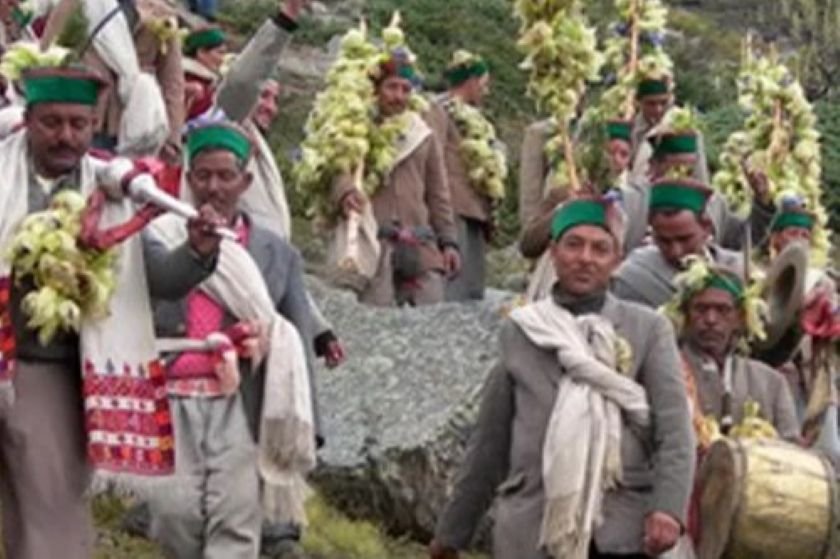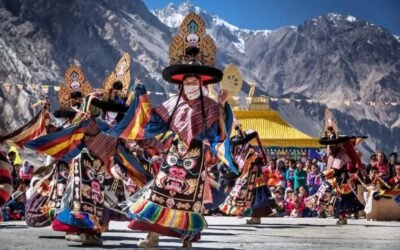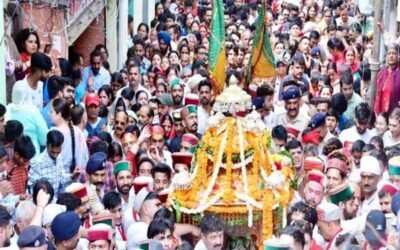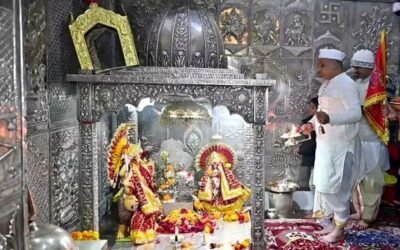📍 Location: Villages of Kinnaur District, notably Morang and Kalpa
📅 Season: September (after Bhadrapada Amavasya, varies by lunar calendar)
A festival where wildflowers become prayers, and the mountains remember their own
🍃 A Festival Rooted in Bloom and Memory
Phulaich—locally called Ukyang—is unlike any other fair in Himachal. It’s a celebration of nature’s beauty and ancestral connection, where villagers gather wild alpine flowers from surrounding hills to offer at the village deity’s altar.
📖 Legend threads say the festival began as a tribute to souls departed, with flowers symbolizing gratitude and remembrance. It reflects Kinnaur’s deep spiritual link between the natural and the divine.
🏞️ Rituals of the Hillside
Phulaich unfolds with sacred steps—each one marked by reverence and ecology:
- Flower Gathering: Men trek into high-altitude meadows to collect wild blooms like Buransh (rhododendron), Pahari Gulab, and blue poppies.
- Offerings to the Devta: The flowers are presented to local deities, often placed in the temple courtyard with dances and drums.
- Tribal Procession: In ornate attire, locals parade to the temple singing folk songs, carrying flower baskets and sprigs wrapped in sacred cloth.
- Ancestor Rituals: Food, fruit, and rice are offered in memory of departed loved ones—a moment of silence before the festivity resumes.
🎶 Culture in Bloom
Phulaich is not just ritual—it’s tribal theater and joyful preservation.
- Dance Performances: Chhanka and Shondul dances grace the fairground, each move echoing the rhythms of harvest, rain, and myth
- Music of the Deities: Instruments like drums, bugchu, and horns are played in sync with the devta’s procession
- Kinnauri Attire: Women wear embroidered chhitku dresses, silver jewelry, and flower-adorned headpieces—men don woolen robes with belts and ceremonial sashes
🌺 Even children carry baskets of petals, learning to walk the path of memory and reverence with playfulness.
🍛 Feasting with the Ancestors
Food plays a spiritual and celebratory role:
- Traditional Dishes: Chhooli, buckwheat roti, local pulses, and sweets made of jaggery
- Floral Prasad: Some flowers are dried and mixed with puffed rice and sweet syrups as symbolic offerings
- Communal Meals: Families share meals under open skies, reinforcing kinship and seasonal joy
✨ Why Phulaich Stands Apart
It’s one of the few festivals that:
- Honors nature and ancestors in equal measure
- Preserves tribal pathways of ecological reverence
- Unites generations through flower, memory, and melody
Phulaich is not loud—it’s gentle, fragrant, and eternal, like the blossoms it offers.
🧭 Plan Your Visit
To witness Phulaich in its fullest grace:
- Timeframe: Mid–late September (lunar dates vary, check with local calendars)
- Best Villages: Morang, Kalpa, Rarang, and surrounding Kinnauri settlements
- Travel Tip: Base yourself in Kalpa; join the morning flower trek and wear Kinnauri headgear if invited—it’s a gesture of respect and immersion
- Stay Options: Homestays in Kalpa, PWD rest houses, and eco-lodges for cultural engagement




